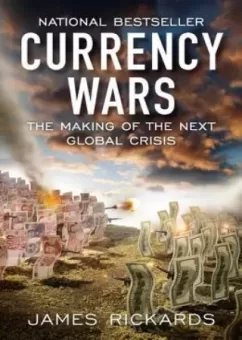Globalization
Globalization has been emerging since the 1960s but did not gain its name and widespread recognition until the 1990s, shortly after the fall of the Berlin Wall. Multinational corporations had existed for decades, but the new global corporation was different. A multinational corporation had its roots and principal operations in one country but operated extensively abroad through branches and affiliates. It might have a presence in many countries, but it tended to keep the distinct national identity of its home country wherever it operated.
The new global corporation was just that—global. It submerged its national identity as much as possible and forged a new identity as a global brand stripped of national distinction. Decisions about the location of factories and distribution centers and the issuance of shares or bonds in various currencies were based on considerations of cost, logistics and profits without regard to affection for a nominal home country.
Globalization emerged not through the initiation of any new policies but through the elimination of many old ones. From the end of World War II to the end of the Cold War, the world had been divided not only by the Iron Curtain separating the communist and capitalist spheres but also by restrictions imposed by capitalist countries themselves. These restrictions included capital controls that made it difficult to invest freely across borders and taxes that were imposed on cross-border payments made on investments. Stock markets limited membership to local firms and most banks were off- limits to foreign ownership. Courts and politicians tilted the playing field in favor of local favorites, and enforcement of intellectual property rights was spotty at best. The world was highly fragmented, discriminatory and costly for firms with international ambitions.
By the late 1990s, these costs and barriers had mostly been removed. Taxes were reduced or eliminated by treaties. Capital controls were relaxed, and it became easy to move funds into or out of particular markets. Labor mobility improved and enforcement of legal rights became more predictable. Stock exchanges deregulated and merged across borders to create global giants. The expansion of the European Union politically and economically created the world’s richest tariff-free market, and the launch of the euro eliminated countless currency conversions and their costs. Russia and China rose as protocapitalist societies eager to adopt many of the new global norms they saw emerging in Western countries. Economic and political walls were coming down while, at the same time, technology facilitated ease of communication and improved productivity. From the point of view of finance, the world was now borderless and moving quickly toward what legendary banker Walter Wriston had presciently called the twilight of sovereignty.
Infinite risk in a borderless world was the new condition of finance. Globalization increased the scale and interconnectedness of finance beyond what had ever existed. While issuance of bonds was traditionally limited by the use to which the borrower put the proceeds, derivatives had no such natural limit. They could be created in infinite amounts by mere reference to the underlying security on which they were based. The ability to sell Nevada subprime mortgage loans to German regional banks after the loans had been bundled, sliced, repackaged and wrapped with worthless triple-A ratings was a wonder of the age.
In a globalized world, what was old was new again. A first age of globalization had occurred from 1880 to 1914, roughly contemporaneous with the classical gold standard, while the period from 1989 to 2007 was really the second age of globalization. In the first, the wonders were not the Internet or jets but radio, telephones and steamships. The British Empire operated an internal market and single-currency zone as vast as the European Union. In 1900, China was open to trade and investment, albeit on coercive terms, Russia had finally begun to throw off its late feudal model and modernize its industry and agriculture, and a unified Germany was becoming an industrial colossus.
The effect of such developments on finance was much the same at the turn of the twentieth century as at the turn of the twenty-first. Bonds could be issued by Argentina, underwritten in London and purchased in New York. Oil could be refined in California and shipped to Japan on credit provided by banks in Shanghai. The newly invented stock ticker brought near real-time information from the New York Stock Exchange to “wire house” brokerage offices in Kansas City and Denver. Financial panics with global repercussions did occur with some frequency, notably the Panic of 1890, involving South American defaults, and the rescue of the leading London bank, Baring Brothers. This first age of globalization was a time of prosperity, innovation, expanding trade and financial integration.
In August 1914, it all collapsed. A London banker, surveying the scene from the window of his City club early that summer and contemplating the pace of progress in his time, could not have imagined the run of tragedy that would ensue over the next seventy-five years. Two world wars, two currency wars, the fall of empires, the Great Depression, the Holocaust and the Cold War would pass before a new age of globalization began. In 2011, globalized finance is omnipresent; whether it is here to stay remains to be seen. History shows that civilization and the globalization it presents are no more than a thin veneer on the jagged edge of chaos.
Pages: 1 2 3 4 5 6 7 8 9 10 11 12 13 14 15 16 17 18 19 20 21 22 23 24 25 26 27 28 29 30 31 32 33 34 35 36 37 38 39 40 41 42 43 44 45 46




